Lewis F Boyer
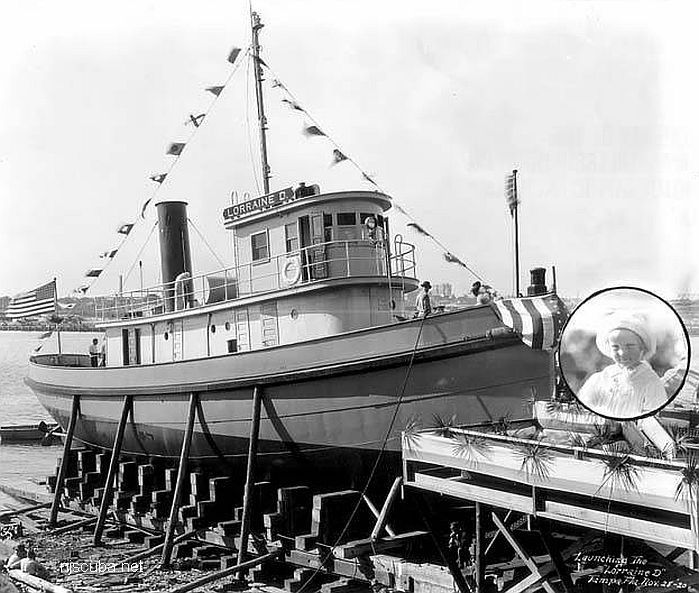
- Type:
- artificial reef, tugboat
- Built:
- 1922, Oscar Daniels, Tampa FL, as Lorraine D
- Name:
- named ( now ) for Travis Nagiewicz, Capt. Steve's son.
- Specs:
- ( 95 x 20 ft ) 125 gross tons
- Sponsor:
- Captains Steve Nagiewicz & Dan Crowell
- Sunk:
- Wednesday October 31, 2001 - Sea Girt Artificial Reef
- GPS:
- 40°08.179' -73°55.824'
- Depth:
- 75 ft
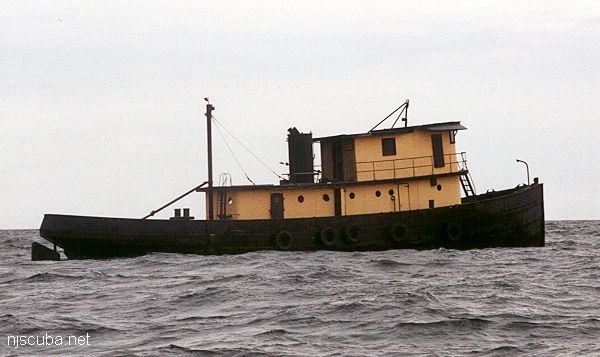
Built in 1921, Oscar Daniels Shipbuilding Company Incorporated of Tampa, Florida (hull #13) as the Lorraine D. for the Oscar Daniels Shipbuilding Company Incorporated of Tampa, Florida. The tug featured a "boot-heel" pilot house. She spent most of her working life in the Philadelphia, Pennsylvania area. Reportedly, the tug ran alcohol during the Prohibition era from Philadelphia, Pennsylvania to New York, New York in tanks which were located mid ships. In 1930, the tug was acquired by Larnie B. Shaw of Philadelphia, Pennsylvania. Where she was renamed as the Lizzie D. Shaw.
In 1945, she was acquired by the Interstate Oil Transportation Company of Philadelphia, Pennsylvania. Where the tug was renamed as the Lewis F. Boyer. In 1964, the tug was "laid up" at Philadelphia, Pennsylvania. In 1969, she was decommissioned, and her engine removed. Eventually the tug was acquired by owned by a dentist named Stan Frankel. Who had the moved to Washington D.C. His intention was to utilize the tug as an office for his dental practice. Which came to fruition, for a short period of time.
In 1977, she was acquired by an individual named David Williams who renovated the tug, including cleaning, painting, and adding a new pilothouse, as well as redoing the interior spaces for modern living, complete with a bathtub, and full galley that included tile counters, and modern conveniences. David Williams had the tug moved to New York, New York, where it was moored at Liberty State Park.
In 1984, Williams hat the tug shifted to Verplanck, New York, where she served as a "live aboard," and then eventually as a summer "live aboard." In 2001, the tug was reefed near Manasquan, New Jersey. She was powered by a single, eight cylinder, Fairbanks Morse diesel engine. Turning a single 86(in) fixed pitch propeller. She was a single screw tug, rated at 400 horsepower. (David Williams)
tugboatinformation.com
from the Asbury Park Press:
Spirited Drama Stirred Coast 60 Years Ago
One December night in 1932, Ensign James P. Gilhooley on the Coast Guard cutter Reliance watched the tugboat Lizzie Shaw and its tow, the coal barge Maurice R. Shaw, rendezvous with two Canadian schooners off Barnegat. When the tug and barge were loaded, they got under way but made the mistake of coming inside the 13-mile limit. Gilhooley and his crew arrested 31 heavily-armed men and seized nearly 5,000 cases reportedly worth about $500,000.
-- January 14, 1980
This is one of the oldest vessels sunk in New Jersey as a reef. The hull is of riveted construction with concrete decks, unique among all the reef tugs that I know of, which are all-welded in the more modern fashion. The engine is removed. The main deck is littered with the remains of the deckhouse, which is almost completely obliterated. The rudder is missing, and the remains of the pilothouse and smokestack lie upside-down in the sand on the port side. This is a great dive for student checkout, in reasonably shallow water, on a nice-size and easy-to-navigate wreck.
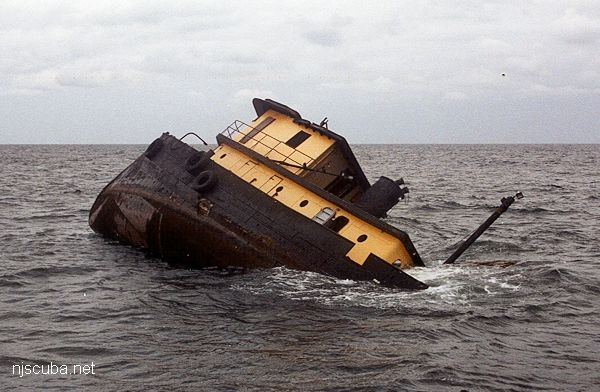
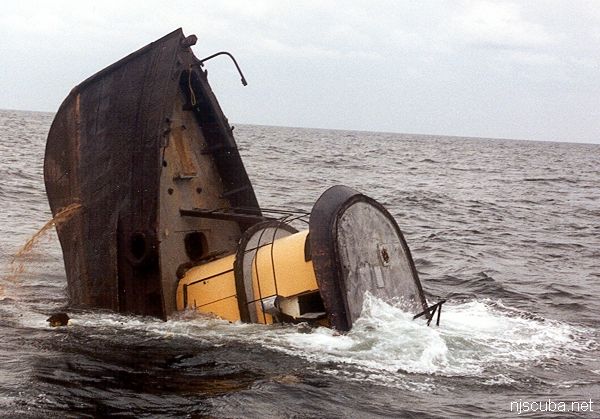
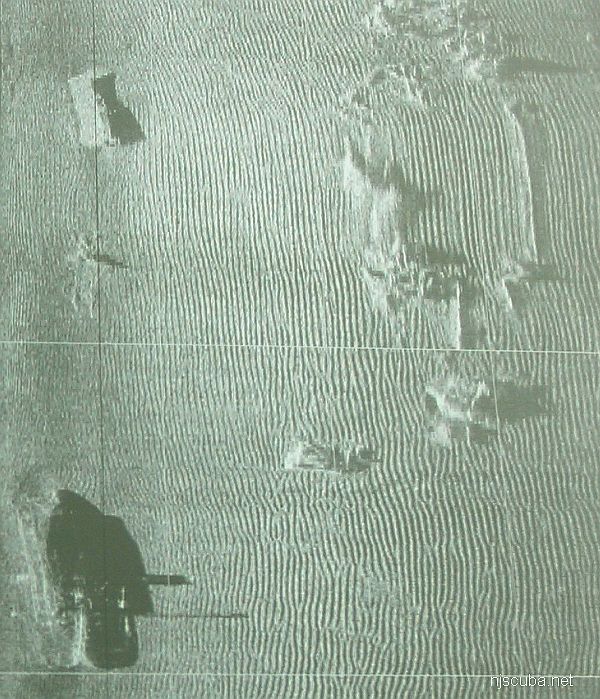
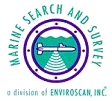
Side-scan sonar image showing the proximity of the brand new "Travis Tug" at lower-left, and the broken-down Horseshoe Wrecks, sunk more than ten years earlier. The sonar shadow reveals that the pilothouse has already been knocked off by a passing barge.
Side-scan sonar images courtesy of Enviroscan Inc, Lancaster PA. / Vince Capone.
The Maritime Life of the Lewis F. Boyer
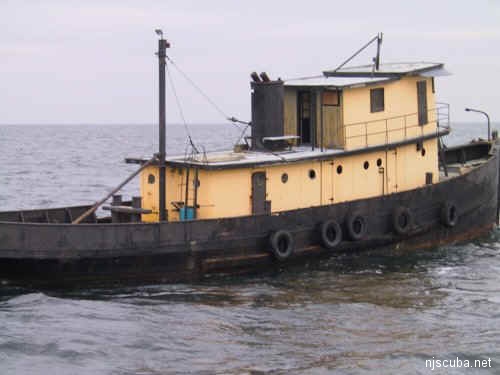
The Lewis F. Boyer was built in 1920 in Tampa Florida and was originally named the Lorraine D. It was subsequently named the Lizzie Shaw and finally the Lewis F. Boyer She was riveted steel, 95 ft in length and 20 ft wide. She was designed to be a coastal tug - not a harbor tug - as is evidenced by her large size, and very high plumb bow. She was intended to tow coal and various other cargo barges. Her main engine was a Fairbanks-Morse 8 cylinder diesel - 400 HP at 400 RPM turning an 86" diameter prop. I am not sure if you have ever seen a low-speed diesel work but they are quite impressive. The engine was about 20 feet long and eight feet high. Each cylinder had a 15" bore and an 18" stroke. There is no clutch and no transmission. To start the engine compressed air was forced into the cylinders. This started the engine turning and when it caught the engineer had to throttle her back. To stop the engine, fuel was cut off and compression released. To reverse the engine, air was forced into the cylinders in a different order thereby causing the engine to reverse the firing order and run in reverse. All this was done from a single large hand-wheel on the side of the engine with the engineer listening to the bells from the pilothouse.
The engines were very heavy, very rugged, very powerful ( torque not horsepower is what counts ), and very quiet. I have cruised on similar boats with the engine running at 80 to 120 rpm and you could carry on a conversation at a normal voice standing next to the engine. Steering on the Lewis was manual. Large cables extended from the steering quadrant in the stern across the deck in pipes and along each side of the deckhouse. At the front, the cables entered the deckhouse, went across the floor, and then down onto a drum on the ceiling of the forecastle. This drum was connected by roller-chain to the wheelhouse. Electricity was provided by a large bank of batteries and was 110 volts DC. The batteries were charged by a generator which ran off the propeller shaft. Everything on the Lewis was heavy and built for work - not comfort. The floors were concrete and slanted at a steep angle to shed water. Most rooms were accessible from the outside only. Usually, a boat that size would have a crew of 7.
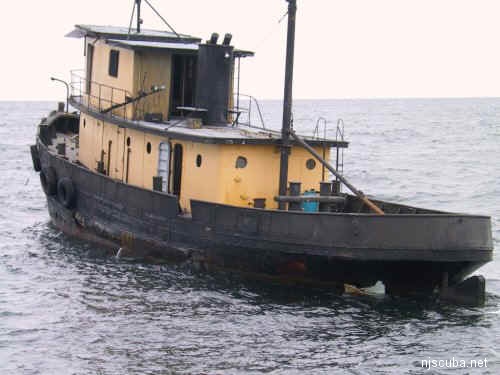
For most of her life, the Lewis worked in the Delaware Bay area. At one point she was actually used as a "rum runner" running hooch from Philadelphia to New York in some unusual tanks which were located mid-ships. In 1969 she was decommissioned and her engine removed. ( It was in Jersey City until a few years ago. ) She went through several owners and finally ended up owned by Stan Frankel - a young dentist who towed her to Washington, DC with the intention of using her for his dental office which he did briefly. In 1977, I bought her from Stan. At that point, she was a hulk. I ( and eventually my wife Sandy ) lived on her year-round for about 8 years. We gradually fixed her up cleaning and painting, adding a new pilothouse, and redoing the interior for "modern" living complete with a bathtub and full galley with tile counters and modern conveniences. We never did get her running but all the work was done with that goal in mind. At first, the boat was docked in DC. In 1979 Stan and I towed it to New York harbor ( West New York, NJ. ) We then moved to Liberty State Park and then in 1984 to Verplanck NY. She served as our home and then a summer home but our having children made it impractical to live on so she became a weekend hobby.
This past year we came to the conclusion that the hull in the stern either had to be repaired or something else done. Repairing the vessel was simply too high-priced and we felt that the reef program was an honorable and fair end to her. After all the work, I could not bear to see her rot away in some cove. She was still a very good boat - she didn't leak a drop on the tow down and, as you can attest, she didn't sink easily. She was certainly one of the oldest tugs still afloat in the New York harbor, and while I was sorry to sink her, I think that this was the best solution.
David Williams
Former Owner
( Feel free to turn the sound off. )
This wreck was sponsored by several groups, clubs, and shops from the New Jersey diving community who held a Film Show: "A Night To Remember" in Manasquan, NJ on Feb 16th, 2001. The evening's speakers were: Ralph White ( Titanic ), Pat Clyne ( speaking on Atocha, ) Herb Segars ( NJ Marine Life ), and Captain Dan Crowell ( NJ Shipwrecks. ) The event helped to raise funds as proceeds to be donated to the Artificial Reef Program of New Jersey to help create more marine life habitats for divers and fisherman. This was a not-for-profit event.
Reef Tug Sponsors
- Captain Steve Nagiewicz
- Captain Dan Crowell
- The Philadelphia Chapter of the Explorers Club
- Gary Szabo
- Marine Academy of Science and Technology ( MAST Scuba Club )
- Professional Divers, Neptune, NJ
- The Scuba Connection, Belle Mead, NJ
- Chatham Water Sports, Greenbrook, NJ
- Delaware Valley Divers Club
- Lang's Ski & Scuba, Trenton, NJ
There were dozens of other groups who also supported the fund-raiser by selling and buying large blocks of tickets. We wish to thank them for their contributions and we hope they enjoy this new wreck on the Sea Girt Reef.
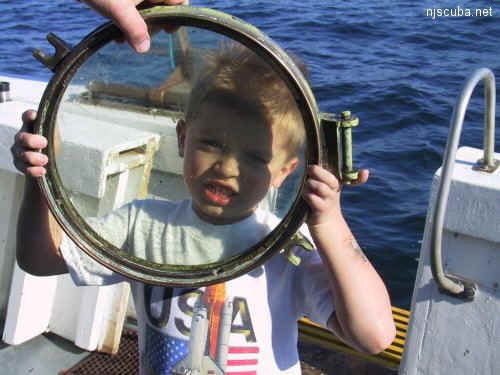
The "Travis Tug" was named after Travis S. Nagiewicz, pictured above, holding the last brass porthole recovered from the wreck by Joe Gallini.
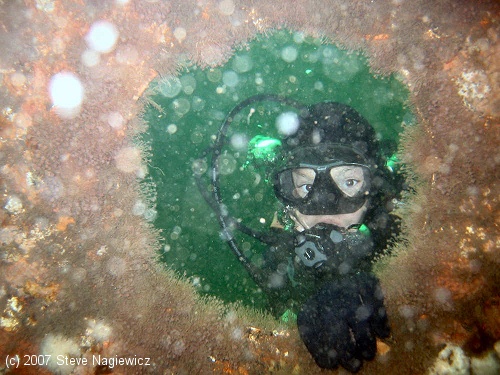
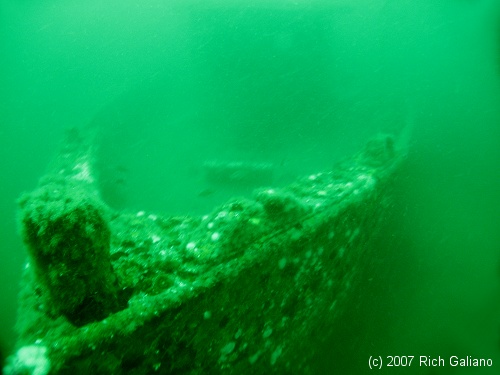
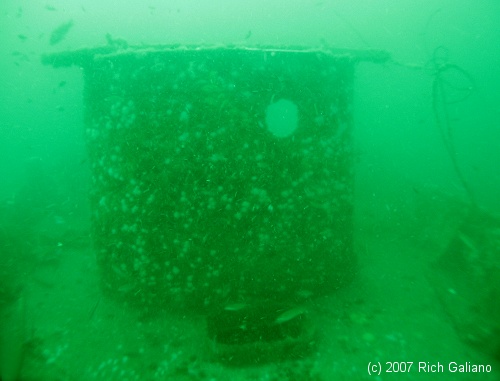

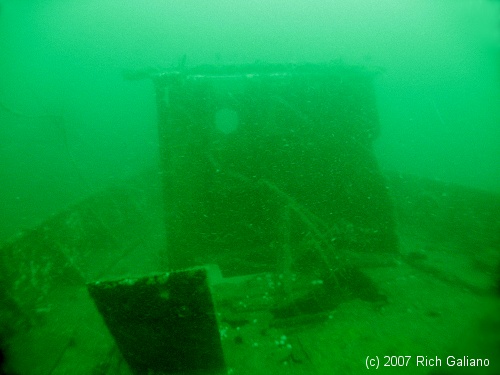


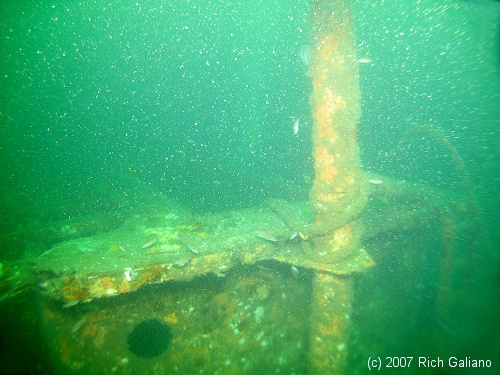

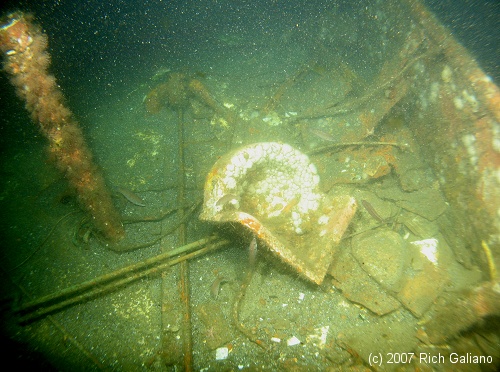

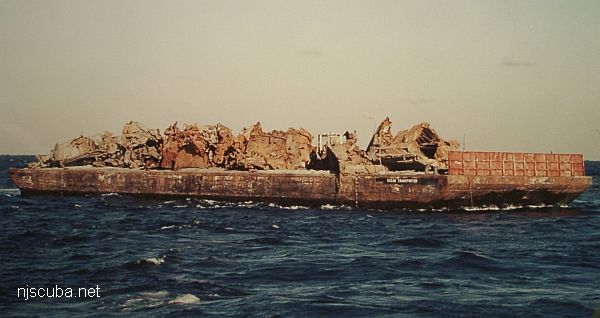
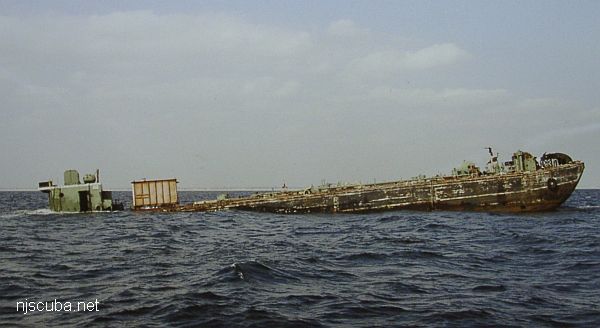
Questions or Inquiries?
Just want to say Hello? Sign the .